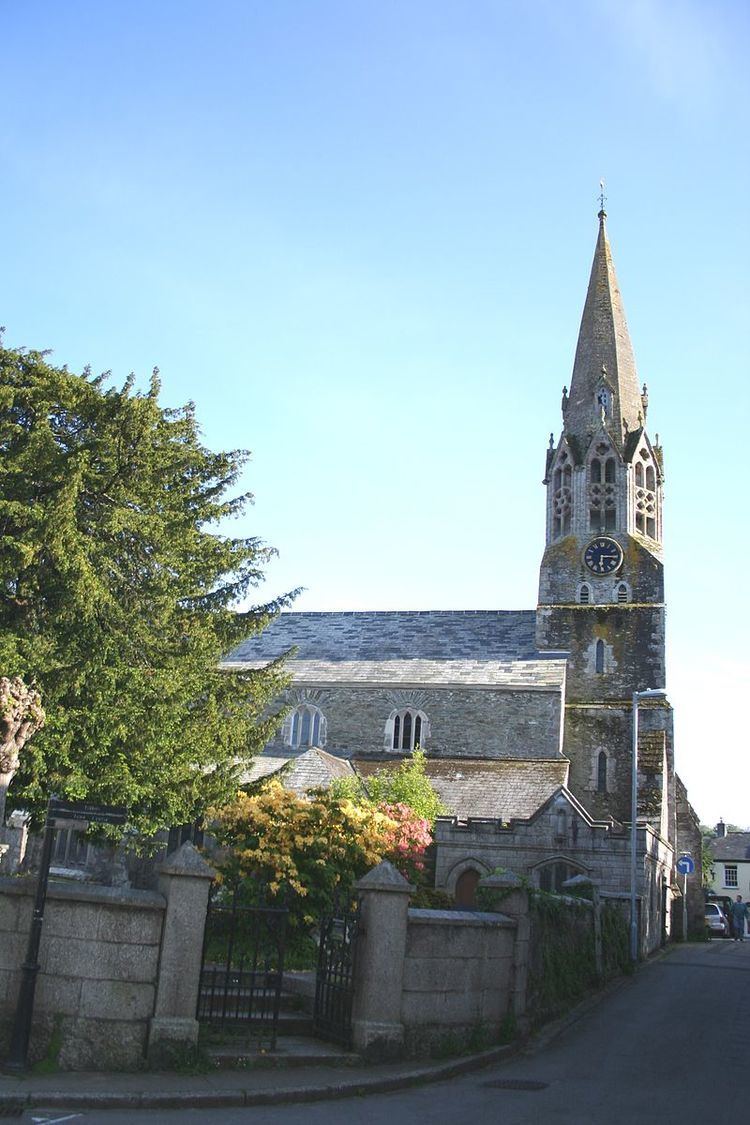OS grid reference SX 104 598 Churchmanship Broad Church Dedication Bartholomäus | Website www.fosb.org.uk Phone +44 7984 517664 Archdeaconry Bodmin | |
 | ||
Similar St Petroc's Church - Bodmin, Restormel Castle, The Flambards Experience, River Fowey, Cornish Seal Sanctuary | ||
St Bartholomew's Church is a parish church of the Church of England in Lostwithiel, Cornwall, United Kingdom.
Contents
Background
It is a Grade I listed building. It includes a tower from the thirteenth century, a spire added in the early fourteenth century, and an octagonal screen around its foot, with former windows on four of its eight sides. Its magnificent spire, built of Pentewan stone, is the outstanding feature of this sizable town church. The north side has a St Catherine's Wheel. Unusually for a Cornish church there is a clerestory above the nave. There are some fine monuments of Georgian period and a brass of 1423. The church itself is mainly fourteenth century. The east window of five lights is one of the most notable in Cornwall, of the same date as the spire. The early fourteenth century font is outstanding, with carved figures of a huntsman and hawk, a head with leaves sprouting from its mouth, an evil face, a wolf and hounds, and lions.
The church was restored in 1878 and 1879 by a Lostwithiel firm of builders, Messrs Phelp and Brown. The exterior of the building was renovated, plaster ceiling removed and the interior was stripped of ″pew monstrosities″. An open-timbered roof of pitch pine was erected along with new floors and the new carvings was carried out by Harry Hems of Ecclesiastical Art Works, Exeter. The restoration cost £1,200 and the church was reopened on 29 May 1879 with a service by Archdeacon Hobhouse.
Organ
The organ was built by Brewer of Truro c.1888, using pipes from an earlier manual organ by Alexander Buckingham in 1828. It has subsequently been restored by Osmonds of Taunton and, in 1992, by Lance Foy of Truro. A specification of the organ can be found on the National Pipe Organ Register.
